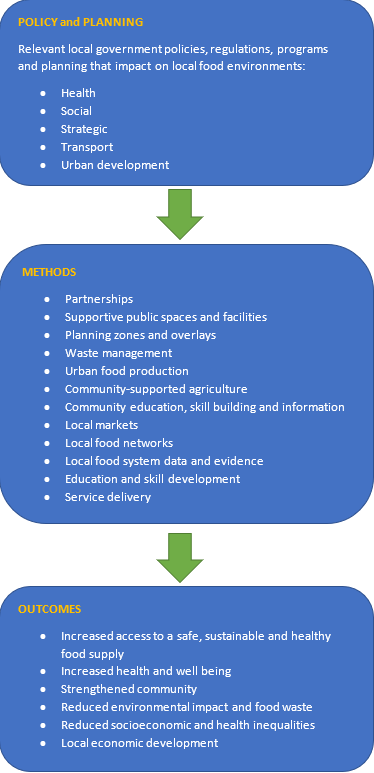Nine ways local governments design healthy and sustainable food environments
Local governments can positively influence the local food environment through:
- Partnerships - develop strong relationships with key stakeholders, organisations and government to strengthen the local food system; facilitate urban food production and community-supported agriculture
- Public spaces and facilities - ensure healthy food and drink options are available for staff and visitors in public spaces and facilities managed by local government; promote healthy options in retail food outlets
- Regulation and planning - support local food production through the local planning scheme; assist food businesses with regulatory compliance; preserve productive agricultural lands
- Waste education and recycling - educate the community to avoid, reduce and recycle waste
- Economic development - promote local products, regional producers and farmers’ markets
- Community development - support community groups and organisations to increase community capacity and individual skills to grow and prepare foods
- Education and information - provide information and support development of skills through communication tools and educators
- Service delivery - provide contracted services to support eligible clients with a nutritious home delivered meal
- Data and evidence - gather information to support decision-making on the local food system and associated challenges.
Designing a healthy and sustainable local food environment

